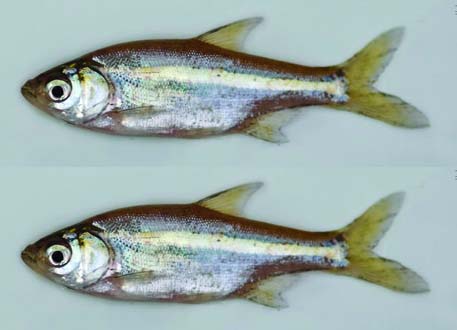
UNB, Dhaka :
Fish farming will likely grow more than expected in the coming decade, offering a chance for improved nutrition for millions of people especially in Asia and Africa, according to a joint report by two UN bodies.
Increased investment in aquaculture – particularly in productivity-enhancing technologies including in the areas of water use, breeding, hatchery practices and feedstuff innovation – should boost farmed-fish production by as much as 4.14 percent per year by 2022, notably faster than the 2.54 percent growth forecast earlier this year in a joint report by FAO and OECD (Organization for Economic Cooperation and Development).
“The primary reason for increased optimism is that there is ample scope for catching up with more productive technologies, especially in Asia, where many fish farmers are small and unable to foot the hefty capital outlays the industry requires to expand output without running into resource constraints,” said Audun Lem, a senior official at FAO’s Fisheries and Aquaculture Policy and Economics Division.
He said, aquaculture is a young industry compared to livestock farming and has grown from virtually nothing in 1950 and to a record production of 66.5 million tonnes in 2012, up almost thirty-fold since 1970.
About 50 percent of the $127 billion in global fish exports in 2011 came from developing countries, which receive more net revenue from the fish trade than from their exports of tea, rice, cocoa and coffee combined, said Lem, one of the authors of the joint report.
Global per capita fish consumption increased from 9.9 kilograms in 1970 to 19.1 kilograms in 2012, although rates vary substantially by and within regions. Africa, Latin America and the Near East have consumption levels of around half the global rate, while Asia, Europe and North America all have rates of about 21 kilograms per capita.
Fish prices in 2022 will be 27 percent higher than today in FAO’s baseline scenario, but up to 20 percent lower if aquaculture expands more quickly, according to a FAO media release.
Fish are the healthiest of meats, their farmed production has a far smaller carbon footprint than livestock, and they are also huge providers of the micronutrients people need. Beyond the energy and protein they supply, they lower the risk of coronary heart disease and improve cardio-vascular health. Fish are also supreme suppliers of long-chain n-3 poly unsaturated fatty acids (LC n-3 PUFA), which are demonstrably linked to better cognitive development as measured by reading skills up to the age of 12.
“Fish is not just food,” says Jogeir Toppe, a FAO officer and expert on fish and nutrition. He cited the case of the mola, a pond fish in Bangladesh that has exceptionally high levels of zinc and iron and Vitamin A as well as 80 times the calcium content as tilapia. Similar pelagic species elsewhere, such as African lake sardines, have similar micronutrient profiles, but many indigenous fish have yet to be studied.
Fish farming will likely grow more than expected in the coming decade, offering a chance for improved nutrition for millions of people especially in Asia and Africa, according to a joint report by two UN bodies.
Increased investment in aquaculture – particularly in productivity-enhancing technologies including in the areas of water use, breeding, hatchery practices and feedstuff innovation – should boost farmed-fish production by as much as 4.14 percent per year by 2022, notably faster than the 2.54 percent growth forecast earlier this year in a joint report by FAO and OECD (Organization for Economic Cooperation and Development).
“The primary reason for increased optimism is that there is ample scope for catching up with more productive technologies, especially in Asia, where many fish farmers are small and unable to foot the hefty capital outlays the industry requires to expand output without running into resource constraints,” said Audun Lem, a senior official at FAO’s Fisheries and Aquaculture Policy and Economics Division.
He said, aquaculture is a young industry compared to livestock farming and has grown from virtually nothing in 1950 and to a record production of 66.5 million tonnes in 2012, up almost thirty-fold since 1970.
About 50 percent of the $127 billion in global fish exports in 2011 came from developing countries, which receive more net revenue from the fish trade than from their exports of tea, rice, cocoa and coffee combined, said Lem, one of the authors of the joint report.
Global per capita fish consumption increased from 9.9 kilograms in 1970 to 19.1 kilograms in 2012, although rates vary substantially by and within regions. Africa, Latin America and the Near East have consumption levels of around half the global rate, while Asia, Europe and North America all have rates of about 21 kilograms per capita.
Fish prices in 2022 will be 27 percent higher than today in FAO’s baseline scenario, but up to 20 percent lower if aquaculture expands more quickly, according to a FAO media release.
Fish are the healthiest of meats, their farmed production has a far smaller carbon footprint than livestock, and they are also huge providers of the micronutrients people need. Beyond the energy and protein they supply, they lower the risk of coronary heart disease and improve cardio-vascular health. Fish are also supreme suppliers of long-chain n-3 poly unsaturated fatty acids (LC n-3 PUFA), which are demonstrably linked to better cognitive development as measured by reading skills up to the age of 12.
“Fish is not just food,” says Jogeir Toppe, a FAO officer and expert on fish and nutrition. He cited the case of the mola, a pond fish in Bangladesh that has exceptionally high levels of zinc and iron and Vitamin A as well as 80 times the calcium content as tilapia. Similar pelagic species elsewhere, such as African lake sardines, have similar micronutrient profiles, but many indigenous fish have yet to be studied.

